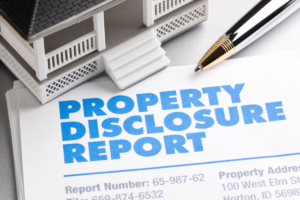by Amar Realtor | June 19, 2023 7:33 am
Streamline Your Home Selling Journey: A Comprehensive Checklist of Essential Paperwork for Effortless Transactions
Introduction
Selling a home can be daunting, with numerous details to manage and paperwork to navigate. However, with proper organization and a comprehensive checklist, you can streamline your home selling journey and ensure effortless transactions. This blog will guide you through the essential paperwork required during the home-selling process, providing a clear understanding of what needs to be done to close the deal successfully. By following this checklist, you’ll be well-prepared, saving time and reducing stress.
Preparing Your Home for Sale
When it comes to selling your home, first impressions are crucial. Taking the time to prepare your property before listing it can significantly impact its appeal to potential buyers. This section will discuss the essential steps you should take to ensure your home is in prime condition and ready to attract buyers. Following these guidelines increase your chances of selling your home quickly and at a desirable price.
Declutter and Depersonalize
Start by decluttering your home. Remove unnecessary items, such as old furniture, excessive decorations, and personal belongings. Clutter can make spaces feel smaller and distract potential buyers from envisioning themselves living in the house. Aim for a clean and minimalist look that allows buyers to imagine their furniture and belongings in the space.
Clean and Stage
A clean and well-maintained home is more likely to attract buyers. Thoroughly clean each room, paying attention to windows, floors, carpets, and bathrooms. Consider hiring professional cleaners if needed. Additionally, staging your home can enhance its appeal. Use neutral colors, arrange furniture to create an inviting atmosphere, and strategically place tasteful decor items to highlight the property’s best features.
Make Necessary Repairs
Address any visible maintenance issues or repairs before listing your home. Fix leaky faucets, repair cracked tiles, replace burned-out light bulbs, and touch up any chipped paint. Potential buyers appreciate a well-maintained property and may be deterred by visible flaws. Consider hiring a professional inspector to identify any hidden issues that need attention.
Enhance Curb Appeal
The exterior of your home is the first thing potential buyers will see. Boost its curb appeal by maintaining a well-manicured lawn, trimming hedges, and planting colorful flowers. Ensure the entrance is welcoming, with a clean front door and a well-maintained porch. Repaint or touch up the exterior if necessary and consider updating your mailbox and house numbers for a fresh look.
Improve Lighting and Ambiance
Ample lighting and a pleasant ambiance can create an inviting atmosphere—open curtains and blinds allow natural light to flood the rooms. Replace outdated light fixtures with modern, energy-efficient options. Add accent lighting to highlight architectural features or specific areas of interest. A well-lit home feels more spacious and appealing to potential buyers.
Consider Professional Photography
High-quality photographs are crucial in attracting potential buyers in today’s digital age. Consider hiring a professional real estate photographer to capture your home in the best light. Professional photos can significantly impact online listings, enticing more buyers to schedule viewings.
Conduct a Home Inspection
While not a prerequisite, conducting a pre-listing home inspection can give you valuable insights into potential issues that may arise during the buyer’s inspection. Addressing these issues beforehand can save time and prevent surprises later in the selling process. It also demonstrates transparency to buyers and builds trust.
By following these steps to prepare your home for sale, you’ll create an environment that appeals to potential buyers, maximizes its value, and increases your chances of a successful and efficient selling journey. Remember, investing time and effort into the preparation stage can yield significant returns when selling your home.
Gathering Property Documentation
 When selling a home, readily available documentation is essential for a smooth and efficient transaction. Properly organizing and collecting the required paperwork in advance will save time and prevent delays during the selling process. This section will outline the essential property documentation you should gather to ensure a seamless home sale.
When selling a home, readily available documentation is essential for a smooth and efficient transaction. Properly organizing and collecting the required paperwork in advance will save time and prevent delays during the selling process. This section will outline the essential property documentation you should gather to ensure a seamless home sale.
Property Deeds
The property deed is one of the most important documents in a home sale. This legal document proves ownership of the property and outlines its boundaries. Ensure you have a copy of the deed, as it will be required to transfer ownership. Contact your local county recorder’s office to obtain a certified copy if you cannot locate the original deed.
Mortgage Information
Gather all relevant mortgage documentation if you have an existing mortgage on your property. This includes the loan agreement, payment history, and contact information for your mortgage lender. Buyers will need this information to understand any outstanding mortgage balance and to coordinate with the lender during the closing process.
Tax Records
Collect your property tax records, including payment history and any assessments. Buyers may request this information to understand the property’s tax liabilities. You can typically obtain these records from your local tax assessor’s office or through online portals provided by the tax authority in your area.
Homeowners Association (HOA) Documents
Gather all relevant HOA documents if your property is part of a homeowners association. These may include the declaration of covenants, conditions, and restrictions (CC&Rs), bylaws, meeting minutes, financial statements, and rules and regulations. Buyers will want to review these documents to understand the HOA’s rules, fees, and ongoing or pending assessments.
Insurance Policies
Compile copies of your homeowner’s insurance policy, including the declarations page and any endorsements. Buyers will need this information to arrange their insurance coverage after the sale. If your property has additional insurance policies, such as flood or earthquake insurance, include those documents.
Utility Bills and Service Contracts
Gather recent utility bills, including electricity, gas, water, and sewer. These documents give potential buyers an idea of the property’s average utility costs. If you have any service contracts for home security systems, lawn care, or other maintenance services, include copies of those agreements.
List of Property Features and Upgrades
Create a detailed list of the property’s features, upgrades, and renovations. Include information on any recent improvements you have made, such as kitchen upgrades, bathroom remodels, new appliances, or energy-efficient installations. Buyers appreciate knowing about these enhancements and their potential value.
Other Documentation
Depending on your specific property and location, there may be additional documentation you should gather. This could include permits and approvals for renovations or additions, surveys, well or septic system records, or any transferable warranties to the buyer.
Gathering all the necessary property documentation in advance demonstrates professionalism and transparency to potential buyers. Having these documents readily available will also expedite the selling process and help promptly address any inquiries or concerns from buyers. Organize the paperwork in a secure folder or digital file for easy access during the selling journey. Being prepared and proactive with your property documentation sets the stage for a successful home sale.
Disclosures and Reports
When selling a home, providing accurate and comprehensive disclosures to potential buyers is crucial. These disclosures help buyers make informed decisions and protect them from legal issues. Additionally, certain reports and inspections may be required or beneficial to facilitate the sale. This section will discuss the various types of disclosures, essays, and reviews you should consider when selling your home.
Seller’s Disclosure Statement
A seller’s disclosure statement is a legal document in which you disclose any known material defects or issues with the property. It typically covers areas such as the structural integrity of the home, the condition of major systems (electrical, plumbing, HVAC), any history of water damage or leaks, and the presence of hazardous materials (e.g., lead paint, asbestos). Fill out the disclosure form accurately and honestly, as any misrepresentation can lead to legal consequences.
Property Condition Reports
Property condition reports provide a detailed assessment of the property’s condition. Professional home inspectors typically conduct them. The report may include information about the roof’s state, foundation, electrical systems, plumbing, HVAC, and other major home components. Providing a property condition report to potential buyers demonstrates transparency and helps them evaluate its current condition.
Pest Inspections
A pest inspection, often conducted by a licensed pest control company, assesses the presence of termites, wood-destroying insects, and other pests. This inspection report provides valuable information to buyers about the property’s susceptibility to pest infestation and any existing damage. Addressing pest-related issues before listing your home can increase buyer confidence and streamline selling.
Lead-Based Paint Disclosure
If your home was built before 1978, you must provide a lead-based paint disclosure to buyers. This disclosure informs buyers of the potential presence of lead-based paint in the property. You may also need to provide additional information, such as any lead hazards, and copies of any reports or records related to lead paint.
Natural Hazard Disclosures
Natural hazard disclosures are required in certain areas prone to natural disasters. These disclosures inform buyers about potential risks such as earthquakes, floods, wildfires, or landslides. Depending on your location, you may need to provide specific reports or information about these hazards.
Homeowners Association (HOA) Disclosures
If your property is part of a homeowners association, you must give buyers HOA disclosures. These documents typically include the CC&Rs (Covenants, Conditions, and Restrictions), bylaws, financial statements, meeting minutes, and rules and regulations of the HOA. Buyers should clearly understand the HOA’s rules, fees, and any ongoing or pending assessments.
Seller’s Home Warranty
Offering a seller’s home warranty can provide buyers additional peace of mind. This warranty covers certain systems and appliances in the home for a specified period after the sale. Including a home warranty can make your property more attractive to potential buyers, as it offers protection against unexpected repairs or failures.
It is important to consult with your real estate agent or attorney to ensure compliance with all relevant disclosure requirements and local regulations. By providing accurate disclosures and obtaining the necessary reports and inspections, you foster transparency, build trust with buyers, and minimize the risk of legal issues arising from undisclosed problems.
Negotiating Contracts and Offers
 The negotiation stage of selling your home is a critical phase that can significantly impact the transaction’s outcome. It involves communication, compromise, and carefully considering various factors to reach a mutually beneficial agreement with potential buyers. This section will delve into the key aspects of negotiating contracts and offers, equipping you with the knowledge and strategies to navigate this phase successfully.
The negotiation stage of selling your home is a critical phase that can significantly impact the transaction’s outcome. It involves communication, compromise, and carefully considering various factors to reach a mutually beneficial agreement with potential buyers. This section will delve into the key aspects of negotiating contracts and offers, equipping you with the knowledge and strategies to navigate this phase successfully.
Reviewing and Evaluating Offers
Carefully review each offer you receive from potential buyers. Evaluate the offered price, proposed contingencies, financing terms, requested inclusions or exclusions, and other relevant factors. Consider the buyer’s financial strength and motivation to ensure their ability and commitment to follow through with the purchase. Analyze each offer’s terms and conditions to understand each proposal’s strengths and weaknesses.
Setting Priorities and Goals
Before entering into negotiations, establish your priorities and goals. Determine the minimum price you will accept and the concessions you are comfortable making. Identify any specific terms or conditions that are of particular importance to you. Understanding your priorities allows you to negotiate effectively and focus on achieving your desired outcome.
Responding to Offers
Craft a well-thought-out response to each offer you receive. You have several options, including accepting the proposal as presented, making a counteroffer, or rejecting the offer outright. When making a counteroffer, clearly communicate the terms you propose to modify, such as the price, contingencies, or closing date. Be open to negotiation and maintain a cooperative approach throughout the process.
Price Negotiation
Price negotiation is a central aspect of the negotiation process. Consider the market conditions, recent comparable sales, and the value of your property to assess the reasonableness of the offers. Determine your bottom line, but be prepared to justify your asking price based on market data and the condition of your home. Present a counteroffer that reflects your desired price while remaining realistic and open to further negotiation.
Contingencies and Terms
Contingencies are conditions that must be met for the sale to proceed. Common contingencies include home inspections, financing, and appraisal. Evaluate each contingency carefully and consider its impact on the timeline and certainty of the sale. Negotiate reasonable deadlines and terms for each contingency, ensuring they align with your needs and protect your interests.
Inclusions and Exclusions
Clearly define the inclusions and exclusions in the sale of your home. These may include appliances, fixtures, furniture, or other items not considered part of the standard fixtures and fittings. To avoid misunderstandings or disputes later, negotiate and specify what will be included or excluded in the final agreement.
Flexibility and Creative Solutions
Maintain flexibility and be open to creative solutions during negotiations. Consider alternative proposals that may satisfy both parties needs. For example, if the buyer’s offer falls short of your desired price, you could explore options such as seller financing, offering seller concessions, or adjusting the closing timeline. Remaining flexible can help overcome hurdles and reach a mutually beneficial agreement.
Seeking Professional Advice
Engaging a qualified real estate agent or attorney can be invaluable during negotiation. They possess knowledge and experience in contract negotiations and can provide expert guidance and advice. Their understanding of local market conditions, negotiation strategies, and legal requirements will help you make informed decisions and protect your interests.
Documentation and Binding Agreements
Once the negotiation is complete and both parties have reached an agreement, it is essential to document the terms in a legally binding contract. Consult with your real estate agent or attorney to ensure all necessary clauses and legal requirements are included. Review the agreement carefully before signing and address any questions or concerns.
Navigating the negotiation stage requires effective communication, a clear understanding of your priorities, and finding common ground with potential buyers. By being prepared, informed, and adaptable, you can negotiate contracts and offers successfully, ensuring a favorable outcome in the home selling process.
Closing the Deal
The final stage of the home selling process is the closing, where all the necessary paperwork is completed, funds are exchanged, and property ownership is transferred to the buyer. This stage requires careful attention to detail, organization, and coordination with various parties. This section will guide you through the essential steps in closing the deal to ensure a successful and smooth transaction.
Opening Escrow
Once you have accepted an offer, the buyer will typically open an escrow account with a neutral third party, such as an escrow officer or attorney. This account is a holding place for all funds and documents related to the transaction. The escrow officer will provide instructions and a timeline for completing the necessary tasks and paperwork.
Title Search and Title Insurance
During the escrow period, a title search is conducted to ensure the property’s title is clear of any liens, encumbrances, or ownership disputes. Title insurance is also obtained to protect the buyer and lender against any unforeseen issues with the title. Work with a reputable title company to facilitate this process and ensure a smooth transfer of ownership.
Finalizing Loan and Financing
If the buyer obtains financing, they will work closely with their lender to approve the loan and secure the necessary funds. The lender will order an appraisal of the property to verify its value and confirm that it meets its lending criteria. Ensure that the buyer is progressing through the loan process and meeting all deadlines to avoid delays in closing.
Completing Seller’s Disclosures and Documents
As the seller, you must fulfill your obligations in providing the disclosures and documents required by law. This may include providing updated property disclosures, copies of inspection reports, HOA documents, and any other relevant paperwork. Consult with your real estate agent or attorney to ensure you meet all legal requirements and fulfill your disclosure obligations.
Final Walk-Through
Typically, the buyer can conduct a final walk-through of the property shortly before the closing date. This allows them to verify that the property is in the agreed-upon condition and that any negotiated repairs or agreed-upon changes have been made. Accommodate the buyer’s request for a walk-through and address any concerns promptly.
Closing Statement and Settlement Statement
The closing statement, also known as the settlement statement or HUD-1 details all the financial aspects of the transaction. It includes the final purchase price, prorated property taxes, fees, and any credits or adjustments for both the buyer and seller. Review the closing statement carefully to ensure accuracy and discuss any discrepancies with the escrow officer or attorney.
Signing the Closing Documents
On the closing day, both parties will come together to sign the necessary closing documents. These may include the deed, bill of sale, loan documents, and other legal paperwork. Ensure that you have a valid form of identification with you, and take the time to review each document before signing. If you cannot attend the in-person closing, alternative arrangements can be made, such as signing documents in advance or utilizing a mobile notary.
Funds Disbursement and Title Transfer
Once all the documents have been signed and the funds have been received from the buyer, the escrow officer will disburse the funds according to the closing statement. Any outstanding mortgage or liens on the property will be paid off, and the remaining funds will be distributed to you, the seller. Simultaneously, the title transfer will be recorded with the appropriate government agency, officially transferring ownership to the buyer.
Post-Closing Obligations
After the closing, there are a few important post-closing obligations to fulfill. Cancel or transfer utilities, notify your insurance company of the change in ownership, and forward any mail or correspondence to your new address. Keep copies of all closing documents for your records, as they may be needed for tax purposes or future reference.
Closing the deal requires coordination among various parties, including the buyer, seller, escrow officer, title company, lenders, and potentially real estate agents or attorneys. Effective communication and timely task completion ensure a smooth closing process. Be prepared, stay organized, and rely on professionals to guide you through the necessary steps, resulting in a successful home sale.
Conclusion
Selling a home involves various stages, and navigating the paperwork and negotiations can be complex. However, following a comprehensive checklist and understanding the required paperwork, you can streamline your home-selling journey and ensure effortless transactions.
This blog has covered key aspects of the home selling process, from preparing your home for sale to negotiating contracts and offers and closing the deal. By decluttering, staging, and making necessary repairs, you can create an appealing environment for potential buyers. Gathering property documentation, including deeds, mortgage information, tax records, and insurance policies, ensures a smooth transaction. Providing accurate disclosures, conducting inspections, and obtaining necessary reports give buyers confidence and protect them from future liabilities. Negotiating contracts and offers requires careful evaluation, effective communication, and flexibility to reach a mutually beneficial agreement. Finally, closing the deal involves finalizing paperwork, coordinating with various parties, and ensuring a smooth transfer of ownership.
Throughout the process, seeking professional advice from real estate agents or attorneys can provide invaluable guidance and ensure compliance with legal requirements. Remember to keep copies of all documents for your records and fulfill any post-closing obligations.
By following the comprehensive checklist and guidelines in this blog, you can streamline your home selling journey, save time, reduce stress, and increase the likelihood of a successful and effortless transaction.
Good luck with your home sale, and may your selling journey be smooth and rewarding!
To learn more details, let’s talk with Amar REALTOR®
Let’s schedule a meeting to review all your Real Estate goals!
![]()
Please Click to schedule a time on my online calendar at no cost!
https://www.amarrealtor.com/meetingwithamarrealtor/
Contact Amar REALTOR® today for more information about Buying/Selling a Home in the Bay Area!
Amar REALTOR® offers expert real estate services with proven results in the Bay Area Housing Market, including Homes for sale in Santa Clara County, San Mateo County, Contra Costa County, and Alameda County.
More Interesting Information about Bay-Area Real Estate
Don’t Get Burned: The Risks of Hiring Unlicensed Contractors
The Dangers of Hiring Unlicensed Contractors: Protecting Your Home and Finances
First-Time Homebuyers: Types Of Mortgages
Renting vs. Buying – Which Is Better?
The Risks of Unlicensed Contractors
First-Time Homebuyers: What You Need To Know Before Relocating?
Let's Connect with Amar Realtor®
We would love to hear from you! Please fill out this form and we will get in touch with you shortly.
Source URL: https://www.amarrealtor.com/real-estate-news/streamline-your-home-selling-journey-a-comprehensive-checklist-of-essential-paperwork-for-effortless-transactions/